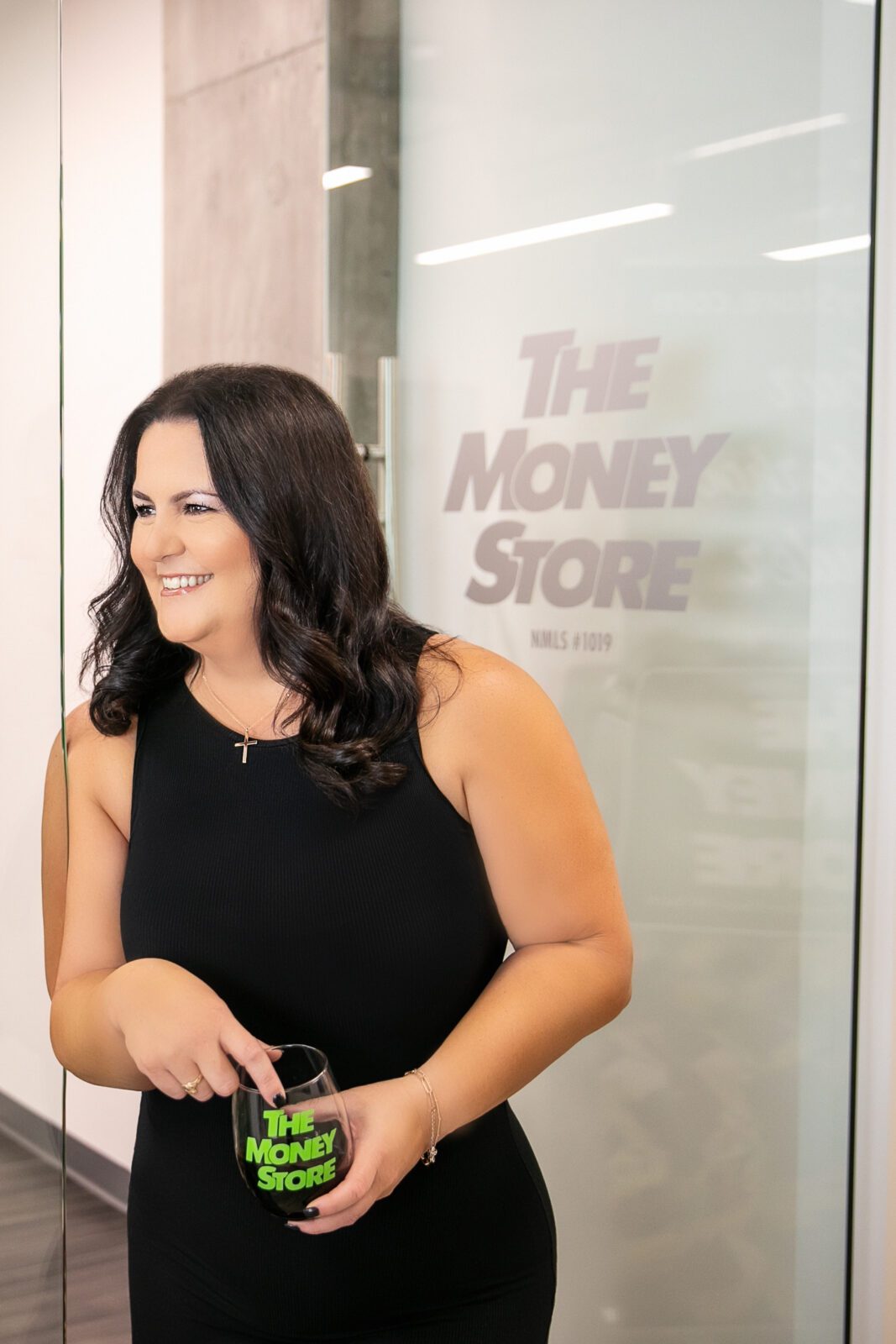Leads aren’t converting? If you’re getting interest but not action, you might be missing some marketing touchpoints.
Relationships don’t happen overnight.
Think about a romantic connection. It starts with a single date—but it’s the time spent together afterward that really matters. Shared experiences. Thoughtful gestures. Consistent presence. That’s how trust grows.
Even your relationship with yourself works the same way. Want to get healthier? You have to show up for that workout repeatedly. You build belief in yourself by doing what you said you would—over and over again—until the results start to show.
The pattern is clear: Consistency builds trust, and trust creates transformation.
Marketing works the same way.
Still, we often expect someone to take action after a single email or Instagram post—as if one perfectly crafted message could do all the heavy lifting. But investing in a service or long-term solution takes more than a moment. It takes a relationship. And relationships require repetition.
That’s why marketing touchpoints matter.
A touchpoint is any moment someone interacts with your brand—online or offline. Each one helps them get to know you a little better, understand your value, and feel more confident saying “yes.” When planned with intention and delivered consistently, touchpoints guide your audience along a path of familiarity, trust, and readiness.
The good news? You don’t need to work harder. You just need to show up—strategically and consistently—so each touchpoint brings them one step closer to conversion.
What’s A Marketing Touchpoint?

Business Marketing Photography Produced for Vance Wealth
A marketing touchpoint is any interaction a potential customer has with your brand. Whether online or in person, each one shapes how they perceive your business and helps build the relationship.
Here are some common digital examples:
- A social media post that grabs their attention
- An email follow-up after downloading your free guide
- A testimonial video watched on your website
- A direct message or comment on LinkedIn
- A behind-the-scenes story that feels personal and real
Here are some common in-person examples:
- A handwritten thank-you note that makes them feel seen
- A conversation at a community fundraiser or charity event
- An engaging talk or workshop you host or attend
- An experience in your studio or office
- A strategic introduction made between two peers
Each of marketing touchpoints is a moment of connection. When you string them together with care, you create a customer journey that feels natural—and builds the kind of trust that leads to action.
The Research Speaks Volumes
The numbers make one thing clear: one touchpoint isn’t enough.
Studies show it takes:
- 6–8 touches to gather key buying info (Salesforce)
- 7–13+ touches just to qualify a lead (B2B averages)
- 8 touches to land a first meeting (RAIN Group)
- 12–15 touches for today’s sales environments
And more recent 2025 data reveals:
- 1–3 touches for inactive customers
- 5–12 touches for warm inbound leads
- 20–50 touches for cold prospects
That range might seem overwhelming, but it tells an important story: the number of marketing touchpoints depends on the strength of your existing relationship.
Why So Many Touchpoints?
Because buyers are on complex, non-linear journeys. Along the way, they’re asking important questions about your brand. At each stage, your brand needs to answer these questions with clarity and care before a conversion is likely.
Awareness: Can I trust you? You need to be seen—and remembered—amid a noisy digital landscape.
Trust & Proof: Do you understand my problem? People want to see consistency and value through testimonials, content, and real human engagement.
Qualification: Have you helped others like me? You’re not just finding a customer; you’re finding the right one, and that takes time.
Complex Journeys: Are you the right fit—right now? The modern customer journey is multi-channel and non-linear. People might interact with your brand in several places before taking action.
Marketing touchpoints help answer those questions. They build awareness, establish trust, and demonstrate relevance—all without pushing or rushing the process.
How Many Touchpoints Does Your Business Need?

Business Marketing Photography Produced for Marla Gieser
We wish we could give you an easy answer to this question, but research proves there’s no one-size-fits-all approach. Instead take strategic steps to define the right number for your unique brand and goals.
1. Map the Customer Journey
Start by breaking down your customer journey into key stages: awareness, consideration, decision, and retention. Then list all the marketing touchpoints you can think of that will serve each stage. Seeing it laid out this way helps create clarity on where touches are needed—and what types of connection you might be missing.
2. Look to Industry Benchmarks
- Quick, simple products: approx. 6 touches
- Mid-tier services (like consulting): approx. 16 touches
- High-ticket or complex offerings: 30–50+ touches
3. Audit Your Own Data
Look at CRM activity, email clicks, social media engagement, and web behavior. Patterns reveal how long it typically takes someone to move from first touch to decision—and where people drop off.
Do warm leads open multiple emails, click your latest case study, and then hit pause? Maybe you need to add a video message, send a personalized DM, or adjust your call to action at this stage in the customer journey. Once you have your customer journey clearly mapped, you can also see where it tends to break down.
4. Differentiate by Lead Temperature
Each stage of the customer journey will require different levels and types of marketing touchpoints. While cold leads need many touchpoints on various channels, an inactive customer is used to hearing from you; they may be overwhelmed by a six-email campaign and instead need an in-person conversation or even just a nice comment on their social media post. More is not always better—but intentional strategy is.
- Inactive prospects: 1–3 soft touches, such as an Instagram Story mention, hand-written card, or supporting their business event
- Warm inbound: 5–12 touches, such as a personally delivered lead magnet, targeted nurture emails, or a testimonial video
- Cold outreach: 20+ touches, which require a persistent, layered effort with targeted social media ads, complex email campaigns, long-form content, and varied calls to action
5. Personalize Where It Counts
A single, thoughtful email might replace several generic blasts. In-person moments can close the sale once digital touchpoints lay the groundwork. Quality can reduce quantity—especially when touchpoints speak directly to someone’s specific problem or stage.
Example: A Goal-Oriented Sequence
This all sounds great in theory. But what does it look like in practice? Let’s say your goal is to get more casual followers to book discovery calls. Here’s a sequence that respects their journey:
- Social post view: They like or save an insightful Instagram or LinkedIn post.
- Profile visit: They click your profile, watch a video, or scroll through your posts.
- Lead magnet opt-in: They click the link in your profile to download your free guide because it matches their specific need.
- Nurture email series: You send a few short, helpful emails with educational tips, heartfelt brand stories, and compelling case studies.
- Social engagement: You notice their engagement levels increasing across platforms, including their email open rate and social media likes. You comment on one of their posts or reply to a story.
- Personal reach-out: Finally, you send a direct message or email inviting them to a discovery call.
Each step builds trust, value and recognition—so by step six, the final call to action feels like a natural next step.
5 Ways To Create More Marketing Touchpoints—Without More Work

Lifestyle Marketing Photography Produced for Premier America
As business owners, our first thought is typically: How much time and money will this cost? And it should be! Marketing not only needs to be effective for our clients, but it needs to be effective for our business and team, too. If it’s bringing in clients but draining all your resources, then you’ve just earned a whole new set of issues to deal with. That’s not the goal. The purpose of marketing touchpoints is to convert more leads as efficiently as possible. Here’s how to multiply your touches without multiplying your problems, too:
1. Repurpose Content
Almost any piece of content can be broken down into another: film a video for your website → turn the video transcript into a blog → tease the blog in an email → break the blog into five social media posts → turn the top-performing post into an ad. Repurposing content is a key strategy for increasing touchpoints without greatly increasing your workload too. Another perk of repurposing? It reinforces your brand message, builds the repetition of your touchpoints, and creates a feeling of credibility and consistency that your leads can’t ignore.
2. Automate With Intention
With your customer journey map as your guide, identify the marketing touchpoints that can be automated without losing personalization. Then create workflows that are triggered by specific actions. After a lead downloads a lead magnet, they receive a case study via email. When they click on the case study, they receive a link for a complementary discovery call. Each step triggers the next.
3. Add Micro‑touches Whenever Possible
Never underestimate the power of a micro-touchpoint. In the digital landscape, these could include a quick non-salesy LinkedIn message or a comment on their post—high impact, low effort. For more complex services or late-stage leads, consider in-person micro-touchpoints like making an effort to say what you liked about their last social media post when you see them at an event. Consider the small ways you would like to be supported by your peers in business, and support others in the same way. People will notice.
4. Layer Channels
The goal here is for your audience to feel like they see you “everywhere” without actually having to be everywhere. This is easier than it sounds, as long as you approach it with intention and strategy. Choose the channels where your audience already hangs out and prefers, then hone in on the types of communication they like best. For example, if your target audience is retirees, then you might prioritize print advertising, Facebook, and in-person appearances. If your audience is other business owners, then email marketing, LinkedIn, and in-person networking events make more sense.
5. Leverage User Activity
Again, this strategy requires that you do your research. Pull up your analytics and get curious. What insights can you glean? Then trigger touchpoints based on what’s working, as well as where you notice breakdowns. Let your audience’s behavior be your guide. For example, maybe you notice that you have a high number of new visitors on your website daily. That’s great! But you also notice that they don’t stay on your website very long, rarely getting past your home page. Consider adding a video where you share the story of how your business started and the core values that make your brand successful. Use emotion and storytelling to hook them and connect.

Lifestyle Marketing Photography Produced for Racquel Wilder
Ready To Take The Next Step?
Touchpoint quantity and quality both matter. But the real power lies in understanding your unique customer journey—and engineering strategic, scalable touchpoints that build trust and ease decision-making.
Start by mapping out your customer journey. Identify the marketing touchpoints that already exist—and the ones that are missing. Then ask yourself: Where can I show up more consistently? How can I make each interaction more personal, more valuable, or more memorable?
When you’re ready to deepen the conversation, SchlickArt is here to help. Whether you need strategic direction, done-for-you content, or guidance on how to show up with confidence, we’ll help you create touchpoints that resonate and convert.
Reach out today to schedule your strategy session. Together, we’ll build the kind of marketing that doesn’t just get noticed—but builds real relationships that last.
Strategize Your Marketing Touchpoints With SchlickArt
At SchlickArt, we believe the best marketing strategies start with real conversations, honest goals and a deep understanding of your unique business. That’s why our approach to strategy goes far beyond spreadsheets and surface-level planning. We take the time to get to know you—your story, your values and the vision driving your work—so we can craft a plan that not only performs but feels right every step of the way.
Whether you’re scaling your business, launching a new offer or simply ready to take the guesswork out of your content, our strategy services are designed to bring clarity, purpose and momentum to your marketing. From high-level consulting and quarterly planning sessions to detailed content calendars and brand messaging, we offer tailored support that meets you where you are—and grows with you.
If you’re looking for a strategic partner who listens closely, thinks creatively and plans intentionally, we’re here to help. Let’s map out a marketing strategy that reflects your goals, supports your team and tells your story with impact.
About SchlickArt
SchlickArt, a luxury visual marketing company based in Santa Clarita, started in March 2012 with the simple idea that empowerment creates a kind of authenticity that shines through every camera lens. Built on a philosophy–rather than a product, service or person–SchlickArt has rapidly evolved, meeting fractional CMO, business and strategy planning, professional portraiture, business photo and business video needs as diverse as the community we capture. It’s the desire to take care of you, the client, that drives us at SchlickArt.






